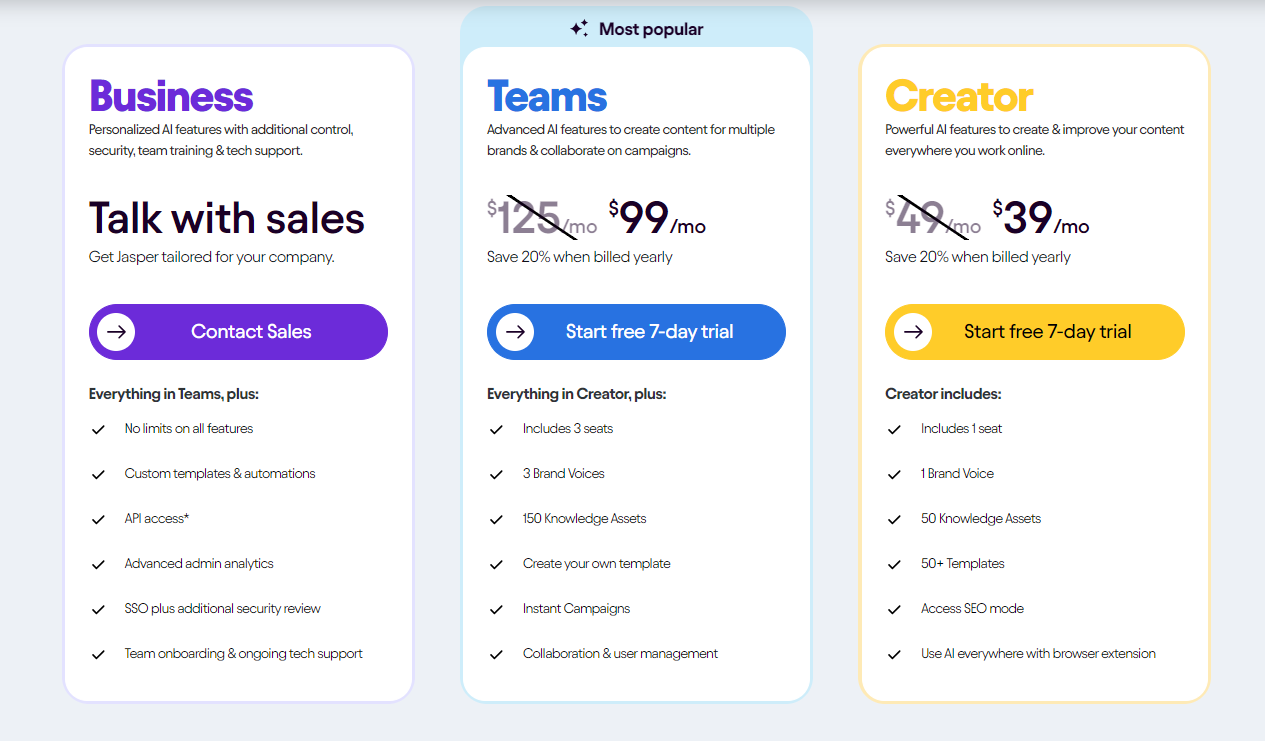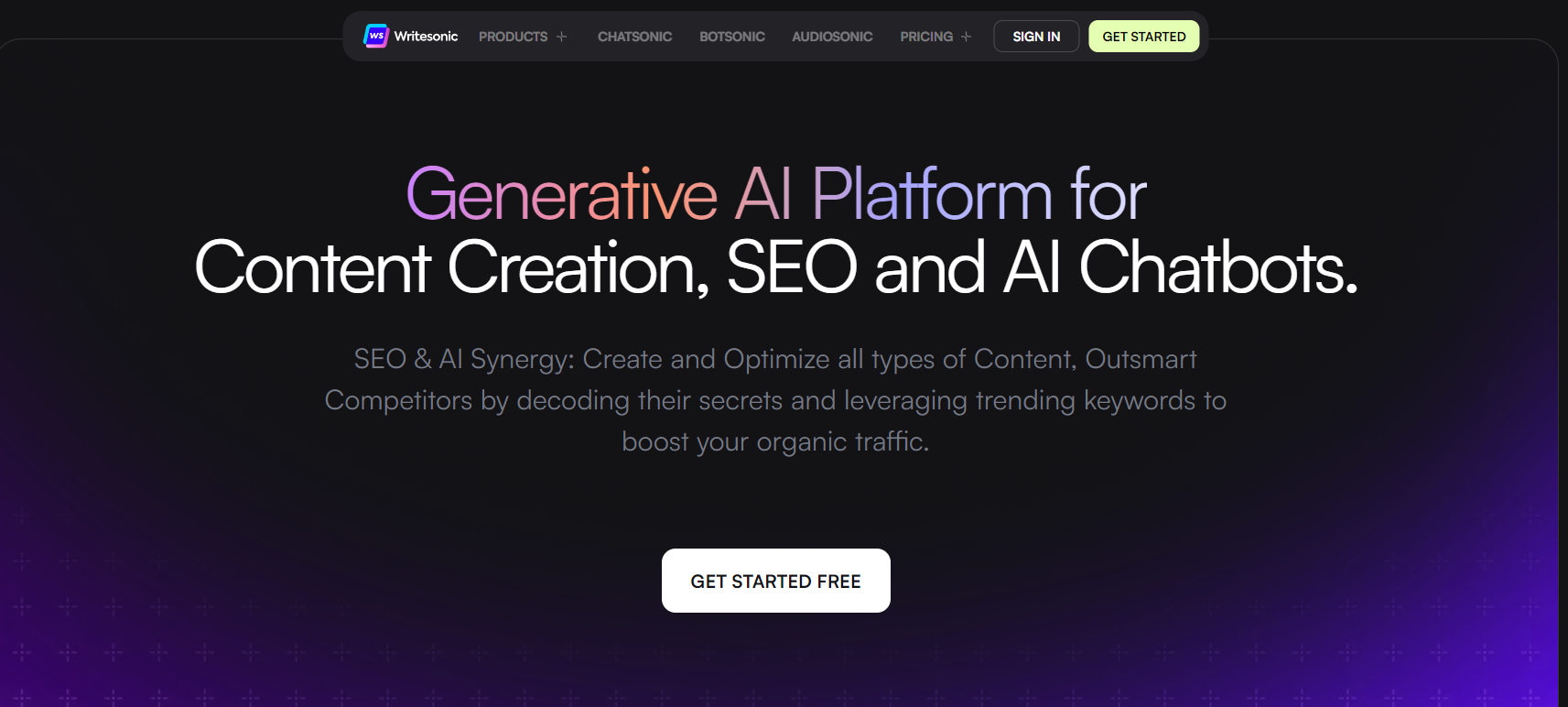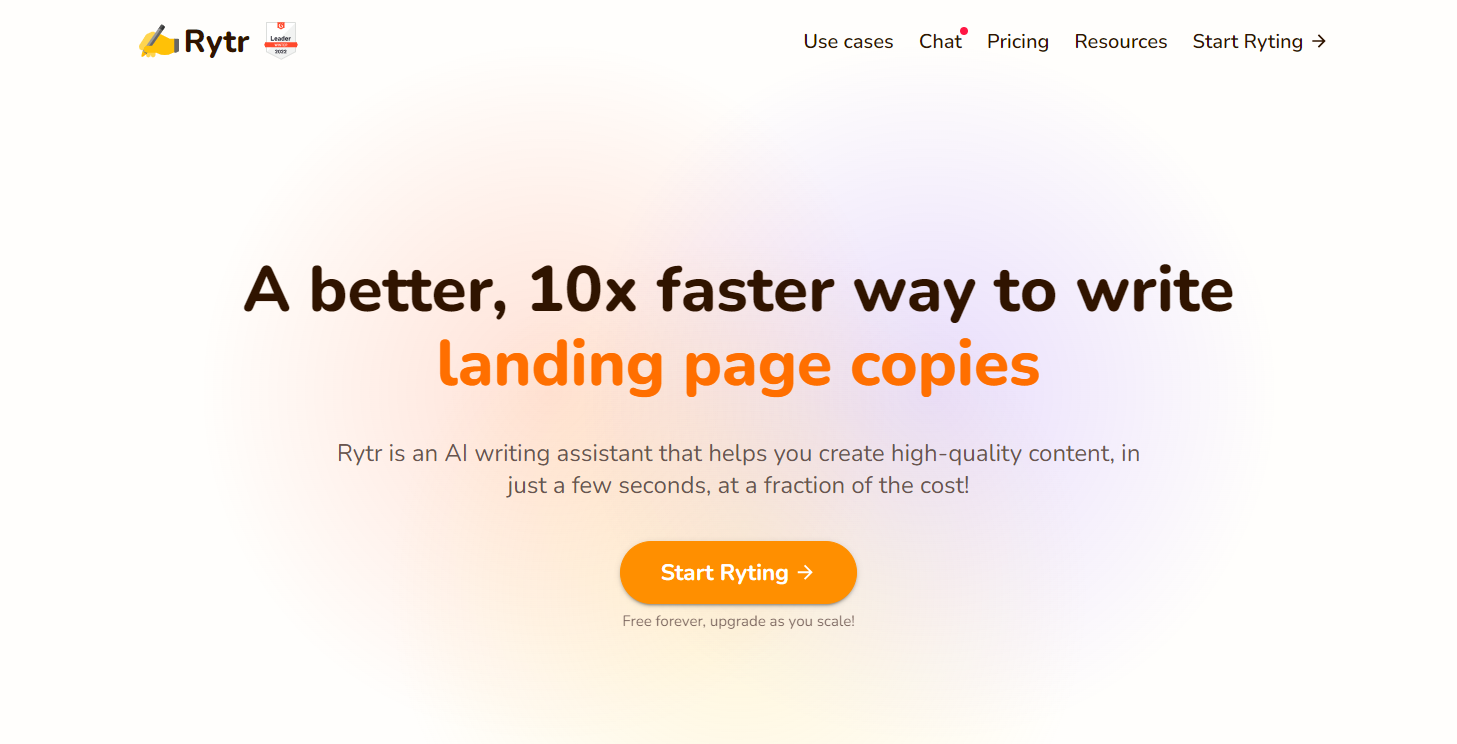Published on: December 1, 2023 Updated on: February 14, 2024
Free AI Copywriting Tools: Choosing the Right One For You
Author: Inge von Aulock

Navigating the AI copywriting tool maze can feel like deciphering an old treasure
Your quest begins with a promising tool—an alluring, gleaming gem among pebbles. You’re mesmerized. You trust its promise of effortlessness, of transforming your ideas into engaging prose as if by magic. You lean into it, let it envelop you, and begin your journey. But soon, the mirage crumbles. Hidden limitations surface, unforeseen costs erupt, and the words it spawns veer into an incomprehensible muddle – your gleaming gem becomes a faux gold nugget. We’ve all been there, haven’t we?
It doesn’t have to be so complicated.
Today, we abandon the elusive treasure hunt and set off on a targeted expedition with a clear destination: learning how to choose a free AI copywriting tool without stumbling into the common pitfalls many succumb to. How do you separate the shiny baubles from the priceless artifacts?
Let’s chart the territory together.

Understanding AI copywriting tools
As we move from the era of traditional writer-based copywriting, artificial intelligence-powered copywriting tools are taking the stage. They’re algorithms that create engaging, result-focused copy. Harnessing these tools can lead to enhanced creativity and productivity, not to mention an engaging and compelling blog post!
What is an AI copywriting tool?
AI copywriting tools aren’t our future. Instead, they’re our present. These tools function on advanced machine learning algorithms designed to generate magnetic, effective copy. They’re shaped by analyzing a massive database of high-quality copy instances, which they use to learn and mirror the conversational style and persuasive flair of successful copies.
Imagine having a 24/7 professional copywriter churning out masterpieces tirelessly. That’s what these wonder tools offer. Writer’s block is sure to be a thing of the past.
The working mechanism of AI-powered copywriting tools
An AI writing tool functions on two key principles: Automation and improvement. Automation implies drafting error-free, engaging content in a snap. On the other hand, improvement refers to the enhancement in quality – the tools constantly adapt and learn from previous samples.
From catchy social media posts to compelling sales emails and engaging blogs, these smart tools can produce diversified results. An ocean of potential is waiting.

Benefits of these tools
AI isn’t just a flashy new tech. Instead, it’s a goldmine of benefits. These tools offer:
- Superior speed, removing the possibility of human fatigue or downtime.
- Consistency in tone and style, catering to a wide audience effectively.
- The opportunity to avoid dull, repetitive tasks and focus on more important work.
The role of AI in copywriting
AI is no longer limited to the realms of science fiction. It’s effortlessly seeping into the copywriting counterpart.
AI is revolutionizing copywriting
AI isn’t merely playing a role in copywriting; it’s sculpting a whole new landscape. It enables copywriters to produce more content faster without trading off the quality. A mundane task like data analysis is now a breeze with AI, offering valuable insights to drive killer content strategies.
AI is creating a symbiotic relationship. Copywriters gain an indispensable tool – machines that seem to have a human touch.
Tasks performed by AI in copywriting
Beyond crafting enticing headlines and compelling core text, instilling a unique brand voice is possible. Rather than replacing human creativity, these AI tools amplify it.
Imagine the different tasks that AI can now manage, like keyword research, topic generation, and drafting blog posts. Sit back and watch your productivity increase instantly!
Features to look for in a free copywriter tool

Did you know that a high-quality AI copywriter could make all the difference for your business’ content strategy? We’ll dig into what makes a tool reliable, the importance of these elements, and how to compare different features on the market.
Key features of a good copywriting tool
The best AI copywriting tools are multi-faceted. Firstly, they include artificial intelligence capabilities that can curate grammatically correct and intricately structured text. Additionally, they should offer a range of writing styles to match different tones and audiences. Look out for tools that provide SEO-focused features because SEO-optimized marketing copy is everyone’s goal.
Next, a substantial tool will have an interactive user interface. Simplified navigation and user-friendly design can end up saving you precious time. Equally critical is the presence of multilingual capabilities. A robust tool should cater to a global audience and offer translations into multiple languages.
Importance of these features in effective copywriting
Understanding the significance of these attributes, these features are not merely a good-to-have but integral to creating effective marketing copy. AI capabilities allow speed and efficiency, producing high-quality content in less time. This means you get to focus your energy on other critical tasks instead of spending hours (or dollars) creating content.
On account of writing style options, an adaptable tool will enable you to align your content with your brand’s tone, making it more authentic. SEO features increase your visibility on search engines, driving more organic traffic to your site.
An intuitive UI/UX translates into a seamless creation process, making your job as a copywriter easier. Multilingual functions imply a greater outreach, resulting in improved engagement and conversions.
Evaluating the features
As we delve into the assessment process, your objective should be to identify a tool that surpasses in all these areas. First and foremost, experiment with different tools to get a feel of their AI capabilities. Settle for one that demonstrates powerful machine learning and delivers quality content consistently.
Investigate the variety of style options offered. Does the tool cater to your brand’s tone? Try out the SEO optimization features. Are they effective in generating SEO-friendly content? Test the tool’s user interface. Does it provide a smooth navigation experience?
Lastly, check for multilingual features. Can the tool effectively translate content without losing its essence? Measurements on these essential aspects would lead you to a tool that truly meets your needs.
Here’s a comprehensive checklist based on the mentioned criteria and other relevant factors:
Tool evaluation checklist

AI capabilities and quality of output
- Test different tools to compare AI writing capabilities.
- Evaluate the consistency and quality of content generated by the AI.
- Check for the tool’s ability to generate content in various formats (e.g., a blog post, social media update, email).
Customization and style adaptation
- Assess if the tool offers a range of style options.
- Determine if it can adapt to your brand’s unique voice and tone.
- Verify if the tool allows customization for specific content types or campaigns.
SEO optimization features
- Test the effectiveness of SEO features in the tool.
- Ensure the tool provides relevant keyword suggestions and optimization tips.
- Evaluate if the tool’s SEO features improve your content’s search engine ranking potential.
User interface and ease of use
- Explore the tool’s user interface for intuitiveness and user-friendliness.
- Check if it requires technical expertise or if it’s suitable for beginners.
- Look for helpful guides or tutorials provided within the tool.
Multilingual and localization capabilities
- Test the tool’s ability to create content in different languages.
- Check if it maintains the essence and accuracy of the content when translating.
- Evaluate the tool’s understanding of cultural nuances in multilingual content.
Scalability and integration
- Determine if the tool can handle increasing content demands as your business grows.
- Check for integration capabilities with other tools and platforms you use.
Data security and privacy
- Verify the tool’s compliance with data security and privacy laws.
- Investigate how the tool handles and stores your data.
Support and resources
- What is the level of customer support provided (e.g., chat support, email, knowledge base)?
- Check if there are resources like community forums, webinars, or customer service for troubleshooting.
Feedback and improvement mechanisms
- Determine if the tool allows for feedback and how it incorporates user input for improvements.
- Assess the frequency and quality of updates or upgrades to the tool.
Cost vs. value
- Compare the tool’s cost (if any) against its features and benefits.
- Consider the return on investment regarding time saved, content quality, and overall efficiency.
Using this checklist, users can methodically evaluate different tools and choose one that best fits their specific needs and goals.

Top free AI copywriting tools
To find the best AI copywriting tools for you:
- Find out the leading free AI copywriting tools at your disposal.
- Gain a brief overview of each tool’s features that elevate your content game.
- Sift through detailed reviews of each tool’s functionalities to make a well-informed choice.
Some of the leaders in the market today include Writesonic, Copy.ai, Jasper AI, and Rytr. Check out our category devoted to AI-powered copywriting for even more. Plus, it’s easy to sort the tools on our site in various ways, including free ones.
Writesonic
This free tool will only cost you if you exceed the limit of 10,000 words per month. It’s ideal for when you need to rephrase content for an update, and even when using the free plan, you can export directly to WordPress. It’s available in 30 languages and even has a browser extension for convenience.
You’ll need to upgrade to one of the paid versions for any analytics, SEO optimization, or the GPT-4 model. The nice thing is that the website allows you to play around with GPT-3.5 vs. GPT-4 and your word limit to come up with a monthly price that meets your needs.

Copy.ai
The Copy.ai free version is ideal for anyone just starting to explore AI writing. It’s good for one user only, but that’s usually enough to get started. It offers 2000 words in chat, is designed to improve your efficiency with daily tasks, and has 200 bonus credits.
With Copy.ai, you get more than 90 templates, 95 languages, and the GPT-4 language model. You also have access to unlimited brand voices and projects.

Penfriend
Penfriend is one of the most advanced AI writing tools out there. It promises to create the most human-sounding content yet, providing full articles in a matter of seconds. It also offers human-touch content ideas to make sure you’re always creating compelling marketing copy.
While this isn’t necessarily a free AI copywriting tool, it does have one free option so you can try it out before you purchase a plan.

Rytr
Rytr’s free plan includes 10,000 characters per month (which isn’t as much as it sounds) and has writing capabilities in over 30 languages. To get your brand voice just right, there are about 20 different tones available, and the built-in plagiarism checker is always handy. As an added benefit, you can also create up to five AI-generated images in a month, and the selection of templates is fairly extensive.

How to get the most out of your free AI tool
Free AI copywriting tools mark a breakthrough in the writing industry, furnishing strategies to create impactful content. Leveraging these tools can bring about a paradigm shift in your business communication.
Understanding your AI tool’s features, strengths, and limitations is vital. Delve into the FAQs or tutorial videos to gain a comprehensive grasp of all capabilities. Additionally, keep your AI tool updated. The AI landscape is evolving at a breakneck speed, and updates often introduce new features or improve existing ones. An outdated tool might limit your copywriting potential.
Best practices
To fully harness the power of AI in your writing, follow these best practices. Not only will these pointers help in producing high-quality content, but also in aligning your writing with the latest trends. Here are some best practices to add to your AI implementation plan.
- Variety in inputs. Feeding a diverse range of inputs fuels the tool’s learning ability. Incorporate multiple writing styles, tones, and structures. An eclectic mixture of styles will render your tool more versatile and robust.
- Maximize outcome with data inputs. AI thrives on data. Include data-driven insights, figures, and statistics in your writing to provide even more variety and trust. This can add depth and credibility to your content, increasing its appeal to readers.
- Regular review. AI tools are not flawless. A regular review of the output, coupled with necessary modifications and corrections, can refine the performance of your tool over time. Continuous iterations will pave the way for perfection.
Remember, with a well-deployed AI copywriting tool, stellar content is not far away. You’re already halfway there. Simply stay aware and follow recommended practices, and the world of AI-fueled copywriting is yours to command.
The future of AI in copywriting
As AI’s potential continues to grow, its implications for copywriting are no less significant. What might the landscape of AI-assisted copywriting look like in the coming years?
First and foremost, a growing market sector is developing towards machine learning and natural language processing. This trend will not only enhance content creation but also improve content refinement and optimization. With an advanced understanding of language, AI tools will be capable of producing high-quality copy that resonates with targeted readers even more than it does currently.
Second, personalization in content generation is on the cusp of a breakthrough. AI tools will likely target individual user preferences, elaborating on an industry where personalization takes precedence. With AI’s improvements, content can be tailor-made for every reader.
Lastly, AI tools will likely become integral to the content strategy formulation process. They will be able to reveal rich insights into target demographics, engagement patterns, and conversion rates, directly contributing to strategic decision-making.

The impact of these trends
The future of AI in copywriting isn’t just about the technology – it’s also about reshaping the way we use AI copywriting tools.
With the progression of machine learning and natural language processing, AI copywriting tools will likely require regular updates for calibration and optimization. Without these updates, your tool could become incompatible with the ever-evolving language models, potentially reducing the output’s quality.
Personalized content calls for advanced data analysis capabilities. You’ll need to feed your AI tool with vast amounts of data, such as user preferences, browsing habits, and customer feedback. Hence, preparing databases full of consumer insights will become imperative.
Users must gain a new skill set as AI copywriting tools become more strategic. They’ll need to know how to leverage the tool for deriving insights on audience engagement and conversion. Understanding how to work with data will become a crucial part of running an effective AI-based content strategy.
Tool updates and trends
The AI copywriting field is dynamic, with new advancements emerging regularly. To stay informed:
- Subscribe to industry newsletters. Many AI technology companies and industry thought leaders publish newsletters. Subscribing to these can keep you updated on the latest developments.
- Attend webinars and conferences. Participate in industry events, both online and offline, where experts discuss current trends and future directions in AI copywriting.
- Follow key influencers on social media. Influencers and experts in AI and copywriting often share insights and updates on platforms like LinkedIn and Twitter.
- Join online forums and groups. Platforms like Reddit, LinkedIn groups, and specialized forums can be valuable sources for the latest discussions and trends.
- Regularly review tool updates. If you use an AI copywriting tool, regularly check for and review updates or changelogs to understand new features and improvements.

Accessibility and inclusivity
AI copywriting tools should cater to a diverse global audience, now and in the future. When choosing one, consider:
- Language support. Tools should support multiple languages and dialects, reflecting the global nature of audiences.
- Cultural sensitivity. AI should be programmed to recognize and respect cultural nuances in writing.
- Accessibility features. Look for tools that offer features for users with disabilities, such as screen reader compatibility or alternative input methods.
- Bias reduction. AI tools should be free from biases, offering inclusive and fair content generation.
Conclusion
Navigating the world of AI copywriting tools requires balancing quality and cost, functionality and simplicity, and customizability and user-friendliness. Mistakes are natural but avoidable with proper research and thoughtful decision-making.
Don’t hesitate to explore and experiment with free (or paid) AI copywriting tools. They offer a unique opportunity to enhance your content creation process and stay ahead in the rapidly evolving world of digital marketing. Dive in, test out different tools, and discover how AI can amplify your writing prowess!
Knowing when to use a tool, what to expect, and how to maximize its potential are critical steps. Armed with this knowledge, you are better positioned to choose the right AI tool for your needs. They are not as daunting as they seem. Instead, they are aids waiting to streamline your writing processes and eliminate writer’s block.
FAQ
Q: Are AI copywriting tools difficult to learn?
A: Most tools are designed with user-friendliness in mind, but the learning curve can vary.
Q: Can AI completely replace human copywriters?
A: AI enhances copywriting but doesn’t replace the creativity and insight of human writers.
Q: How do free AI copywriting tools make money?
A: Many offer premium features or advanced functionalities for a fee. They also advertise.
Inge von Aulock
I'm the Founder & CEO of Top Apps, the #1 App directory available online. In my spare time, I write about Technology, Artificial Intelligence, and review apps and tools I've tried, right here on the Top Apps blog.
Recent Articles

In 2024, your smartphone camera is about to get a whole lot smarter. AI camera apps are transforming the way we capture and...
Read More
Learn how to use advanced search tools, newsletters, and reviews to uncover the perfect AI-focused podcast for you.
Read More
AI chatbot vs virtual assistant? who reigns supreme? We're dissecting the differences, strengths, and weaknesses, using data-driven insights.
Read More